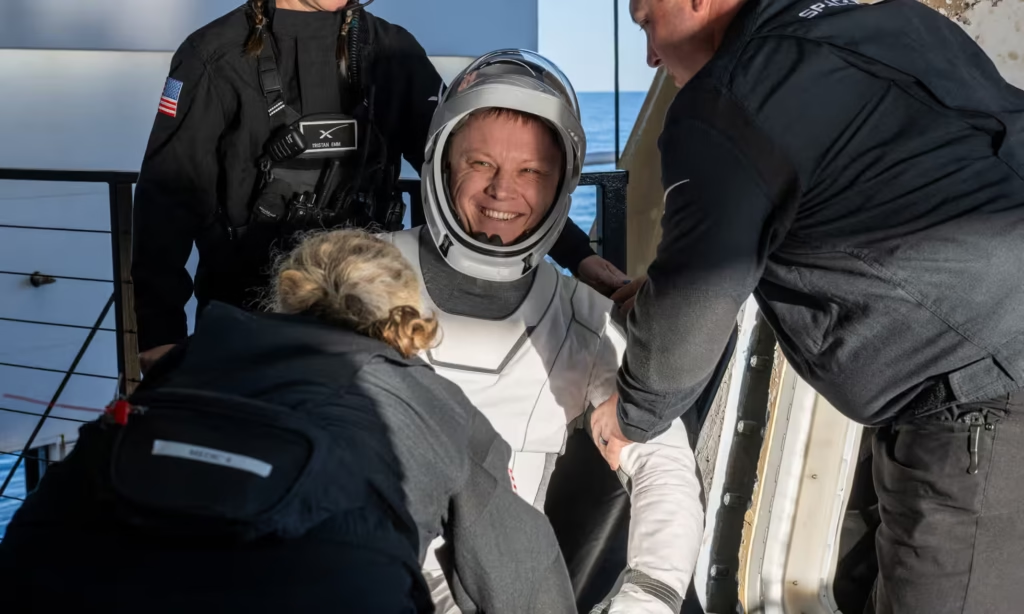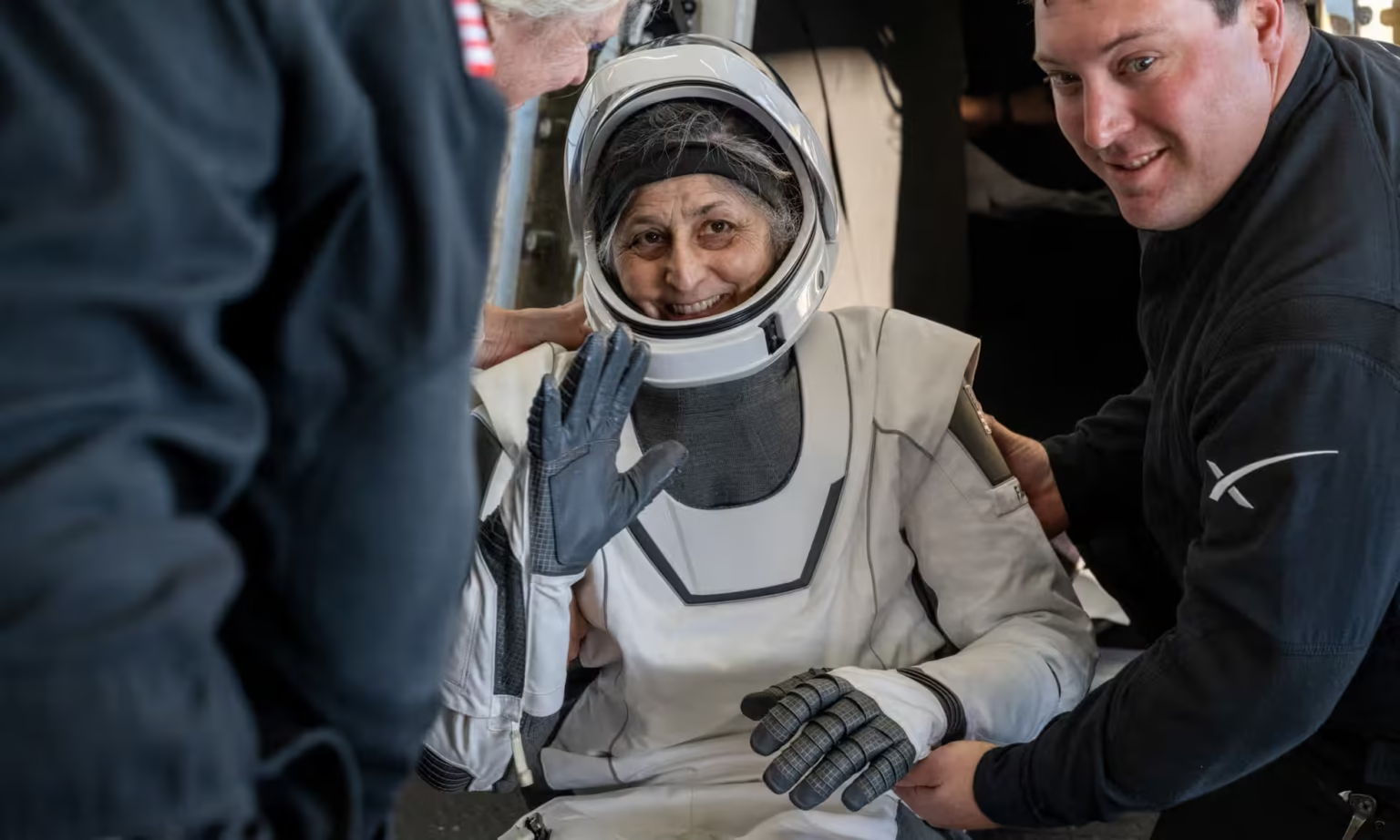Two NASA astronauts stuck onboard the International Space Station (ISS) since June 2024 finally arrived back on Earth on Tuesday evening, more than nine months after the failure of Boeing’s pioneering Starliner capsule scuppered their originally scheduled week-long mission.
A SpaceX Dragon capsule containing four astronauts, including Starliner’s test pilots Sunita Williams and Barry “Butch” Wilmore, splashed down in the Gulf of Mexico, off the coast of Tallahassee, at 5.57pm ET (9.57pm GMT) after a 17-hour descent.
The spacecraft slowed from 17,000mph (27,359 km/h) as it entered Earth’s atmosphere and emerged into a clear blue Florida sky before coasting under four parachutes to a gentle splashdown on what a Nasa commentator said was a “calm, glasslike ocean”.
“And splashdown. Crew-9 back on Earth. Nick, Aleksandr, Butch and Suni, on behalf of SpaceX, welcome home,” a voice from mission control said, shortly before a pod of frolicking dolphins appeared and swam around the bobbing craft.
“What a ride. I see a capsule full of grins, ear to ear,” Nicholas Hague, the third American onboard, replied.
Williams and Wilmore arrived at the ISS on 6 June last year, intending to stay long enough to evaluate Starliner’s docking and operational capabilities during its first crewed flight and return home no more than 10 days later.
But a series of technical issues and safety fears led Nasa and Boeing to send the capsule back to Earth empty in September, and extend the pair’s stay by making them crew members onboard the space station in place of two other astronauts still on the ground who were reassigned to other future missions.
The Dragon capsule, called Freedom, undocked from the orbiting outpost at 1.05am ET on Monday, containing Williams, Wilmore, Hague and Russian cosmonaut Aleksandr Gorbunov.
“We’ll miss you, but have a great journey home,” NASA’s Anne McClain had called out earlier from the space station as the capsule pulled away 260 miles (418km) above the Pacific.
Hague, who arrived at the space station with Gorbunov in September, said it had been a privilege to “call the station home” as part of an international effort for the “benefit of humanity”.
Dressed in re-entry suits, boots and helmets, the astronauts were seen earlier on Nasa’s live footage laughing, hugging and posing for photos with their colleagues from the station shortly before they were shut into the capsule for two hours of final pressure, communications and seal tests.
The capsule was lifted on to a recovery vessel about 30 minutes after the splashdown.
“Awesome job, both uphill and downhill,” Hague told mission controllers, referring to his flights to and from the space station, immediately before a side hatch was opened and the astronauts were lifted out on stretchers, a routine practice, and taken for medical evaluation.

Roscosmos cosmonaut Aleksandr Gorbunov is helped out of a SpaceX Dragon spacecraft. Photograph: NASA/Reuters
Hague was first to emerge, smiling and waving, followed by Gorbunov, then Williams and Wilmore to cheers and applause from the recovery crew. Williams grinned and waved a thumbs-up sign; Wilmore shook the hand of a crew member and waved as he was led away.
Williams returned home as the American astronaut with the second-longest combined time in space, 608 days over three visits to the space station, the first in 2006. Only Peggy Whitson, a former chief of Nasa’s astronaut office, has more, with 675 days over four space flights.
Williams and Wilmore’s odyssey became something of a political football, with the SpaceX founder and Donald Trump acolyte Elon Musk insisting without evidence they had been “abandoned” by the Biden administration, and Trump attempting to paint last week’s long-scheduled routine crew rotation flight as a special rescue mission ordered by the White House.
The fallout left the astronauts in an awkward position, with Wilmore telling reporters from space earlier this month that Musk’s claim he offered to bring them home last year, but was rebuffed by Joe Biden, was “absolutely factual”, while admitting: “We have no information on … what was offered, what was not offered, who it was offered to, how that process went.”
Yet in February he told CNN: “We don’t feel abandoned, we don’t feel stuck, we don’t feel stranded. I understand why others may think that … if you’ll help us change the rhetoric, help us change the narrative, let’s change it to ‘prepared and committed’, that’s what we prefer.”



